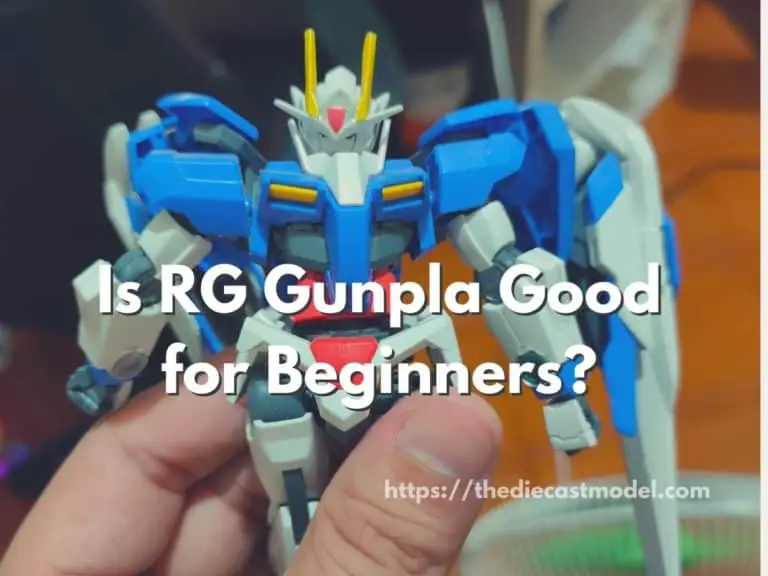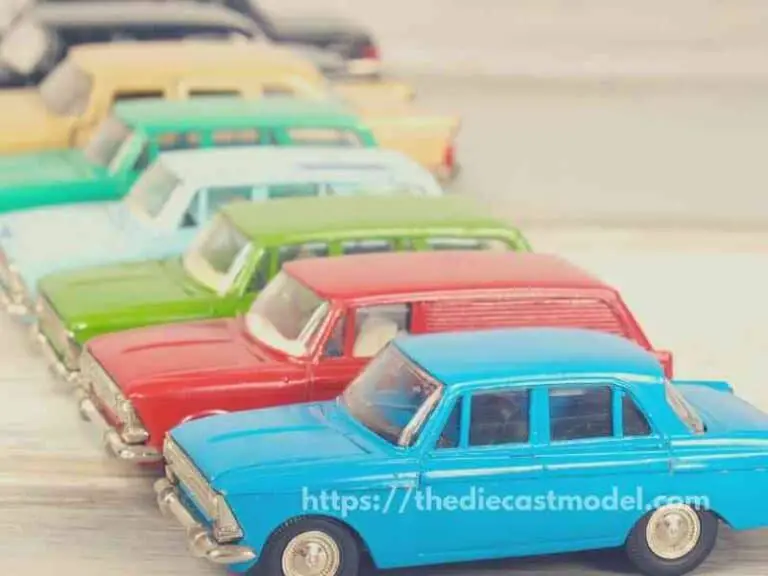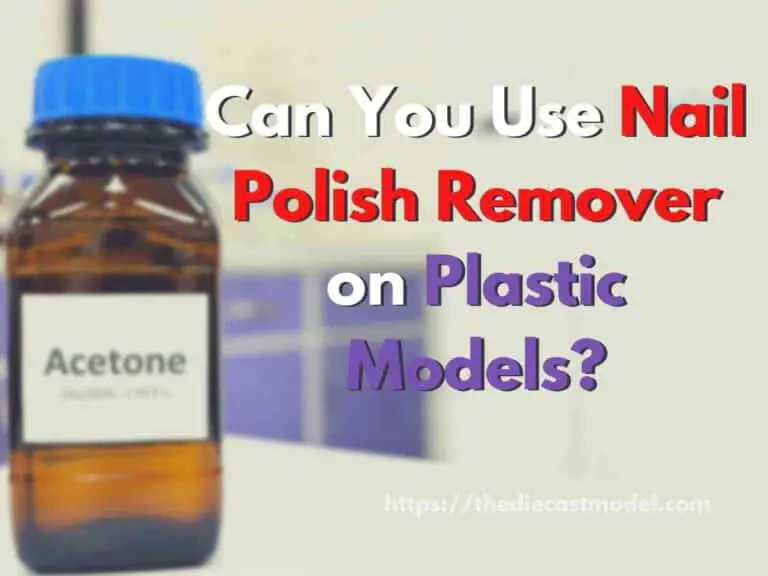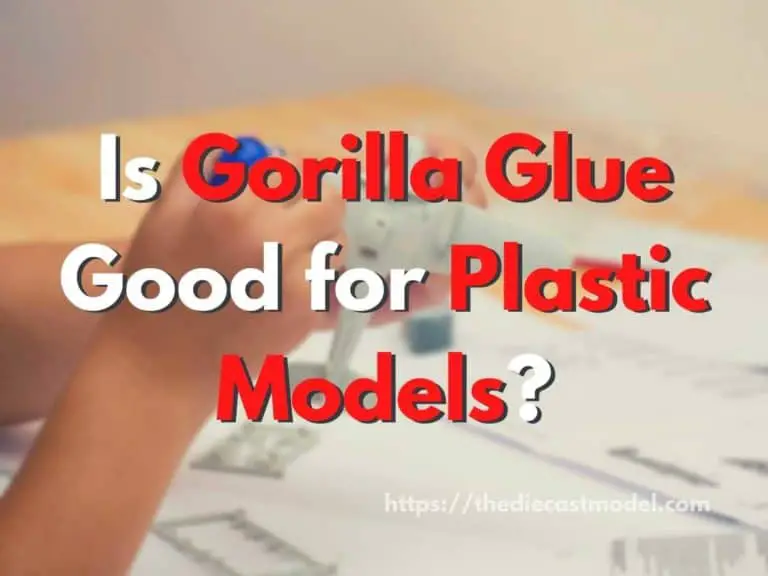Diecast Metal: Does it contain lead?
Even if it’s rare, you will sometimes hear some news that some diecast metal toys are being recalled because they failed some lead safety regulations. These can make you wonder and worry to buy some models either for you or as a gift. Thus, this article will answer if these diecast metals are toxic. In particular, do diecast metals really contain lead?
Diecast metal might contain a trace amount of lead. However, the majority of these diecast metals are made with Aluminum, Zinc, and Magnesium. There is also a regulatory body constantly checking these models for the metals to prevent a toxic level of lead.
In this article, we are going to talk a little bit about the diecasting process. We are also going to talk about the types of metal used in the process so you can see what metals are being used. Furthermore, we are going to talk about some testing done on these metals so you’ll have a complete understanding of the topic.

Does diecast metal contain lead?
Diecast metals might contain lead which would be toxic if swallowed. That’s why there are some consumer safety regulations constantly checking these metals to make sure that it is safe. For this reason, toxicity from these diecast metals is quite rare.
First, let’s discuss the diecasting process because we need to learn a little bit about this to learn more about the materials it uses.
Die-casting is a type of mass production process that is commonly used in metal processing.
Molten metal is typically injected under high pressure into the cavity of a steel mold, where it solidifies into its final shape. Die-casting is similar to the plastic injection molding used to make LEGO® in many ways.
Because the injection system and the die (mold) are both made of steel, most diecast products contain metals with lower melting points, such as zinc, copper, aluminum, magnesium, lead, and their alloys.
Diecast toy production began in the early twentieth century. Most diecast toys are made of Zamak, a zinc alloy with trace amounts of aluminum and copper.
The ability to produce highly detailed precision models, as opposed to those made from wood, plastic, and sheet steel, is an appealing feature of diecast toy production.
There are a variety of metals and alloys that can be used when beginning a die casting project. Each alloy has distinct physical properties that are beneficial in various applications.
The following are the most commonly used diecast metals:
- Aluminum
- Zinc
- Magnesium
Metal diecast parts contain various alloys (mixed elements), and each one has its own set of properties, benefits, and drawbacks.
Aluminum die casting
Aluminum is among the most widely used metals in die casting.
Because aluminum is a lightweight metal, it is ideal for producing lightweight parts without sacrificing strength.
Aluminum parts can also withstand higher operating temperatures and have a wider range of finish options.
Despite being more expensive, aluminum and aluminum-zinc alloys are well worth the investment in industrial applications.
They are highly corrosion-resistant materials that contribute to increased longevity and safety.
In addition, the strength, hardness, and weight ratios are unrivaled.
Due to its benefits, Aluminum is widely used to manufacture industrial components, automobile parts, tech products, aerospace products, and many other items.
Zinc die casting
Zinc, in addition to aluminum, is a widely used metal in die casting.
Zinc is commonly used in the manufacturing of casting products for the automotive and medical supply industries.
As zinc has a low melting point, it requires less energy to produce. The low melting point also contributes to mold life, which is an essential factor in the value of die casting in medical equipment and model toys.
The corrosion resistance of zinc is impressive, and it has a high thermal conductivity. As a result, this material is long-lasting, hard, and stable.
When it comes to customizing items for aesthetic purposes, zinc castings are usually the best option. Depending on the application, the material can be plated or painted.
It also provides a smooth working surface.
Although, one problem with zinc diecasting is called oxidation. While it doesn’t rust, it can cause some white to greenish discoloration.
That’s why I made a guide on how to properly take care of your diecast models. Here is an article I’ve made that discussed everything from cleaning, storing, and restoring. Here is the guide: How to Take Care of your Diecast Model
Magnesium die casting
Magnesium is another common metal used in die casting.
Magnesium is the most easily machined metal, has a high strength-to-weight ratio, and is the lightest alloy.
Magnesium alloys have several distinguishing characteristics, including superior fluidity, lower susceptibility to hydrogen porosity, and superior castability than other cast metals such as aluminum and copper.
Magnesium is also 75% lighter than steel while maintaining its strength.
As a result, it is a far superior material for thin-walled, complex net shape castings. It also provides more dimensional stability.
Magnesium castings can achieve tight tolerances that would be difficult or impossible to achieve with steel.
Resin Diecasting
Resin diecasting is the newest one on the list.
However, I would like to note that Resin is not metal diecasting.
But since resin is the newest technology manufacturers use in making these model cars, it makes the most detailed models.
The thing I like with Resin diecasting is that it allows for more details and better curvatures to the point where even smaller parts of a model can be extremely detailed.
Some companies that use Resin diecasting are Spark and Maisto. Although more and more brands are starting to sell resin diecasts.
For more information about Resin diecasting, here is a blog post I made where I compared this newer method to the traditional diecasting technique: Resin vs Traditional Diecasting: A detailed comparison
So here is the point. These diecast metals can be toxic if swallowed. That’s why there is an age restriction in the box.
This is especially true for toddlers that might swallow some smaller parts of these models. So make sure to keep an eye on that.
Is diecast metal toxic?
Diecast metal can be toxic if swallowed because some of these models have traces of lead. That is the reason why diecast models have age specifications to prevent swallowing. However, the Consumer Product Safety Commission has been active in testing and checking diecast metals to prevent toxicity.
Brass, copper, lead, and tin is also used for custom die casting jobs and are assumed to be used in diecast model cars and toys.
Our body needs a specific amount of metals to function properly.
This is why food labels frequently boast about the iron and zinc content of their products.
On the other hand, toxic heavy metals act differently, accumulating in the body and interfering with normal, healthy processes. Exposure to high levels of these toxins results in illness.
Lead is perhaps the most well-known threat, and it has been on the Consumer Product Safety Commission’s “black list” for many years.
As part of taking up the American Society for Testing and Materials standards for testing heavy metals in children’s toys in February 2012, the commission currently regulates lead at 100 parts per million, or ppm.
According to the Consumer Product Safety Commission, 157 different types of toys were recalled in 2007, with 99 of them being related to lead toxicity.
That means approximately 6 million children’s toys were removed from store shelves to be tested for lead paint or lead components.
Despite the Consumer Product Safety Improvement Act of 2008, which mandated that every child’s toy in the United States be tested by an independent body, 45 types of toys were recalled between 2008 and 2011 due to toxicity concerns.
While regulatory and safety organizations have long been concerned about lead levels in toys, some other metals are not subject to the same concern.
Other toxic heavy metal regulations, such as cadmium and barium, are still voluntary. This means that businesses are legally free to substitute lead for a substance that could be equally harmful to a child’s body.
Due to the safety concern, Dr. Shangshang Mu did research on diecast model toy cars to find out if these contain any toxic elements.
He got 28 samples to examine, ranging from the 1960s to the 2010s.
They mainly were Matchbox, but some were also from other major toy car brands sold in the United States.
Luckily, the results show that none of the samples he tested contained lead.
The colors of the paint samples were correlated to the identified characteristic peaks; titanium dioxide and zinc oxide were white, carbon was black, and sulfur-containing sodium silicate was blue.
Debra Lynn Dadd discusses toxic-free products on her blog and suggests that every company should show its production process, including toxin information.
She pointed out that toy products will frequently say things like “paint contains no heavy metals” and other statements that indicate an awareness of where toxins are in the materials.
But here is the point.
It’s not toxic as long as you don’t swallow it. That’s why you’ll see things such as “For 8 and above” on diecast models.
Conclusion
Due to safety regulations, toxic elements like lead are less used in the die casting process.
Aluminum, Zinc, and Magnesium are widely used metals in the process.
The global aluminum diecasting market was valued at USD 24.91 billion in 2018. From 2019 to 2025, the industry is expected to grow at a compound annual growth rate of 10.1 percent.
However, aside from the metal, other components of a product should be scrutinized for toxic elements as well.

“Only the things I love”
thediecastmodel.com is reader-supported. When you buy through links on the site, I earn an affiliate commission.
So, here are the things I love when taking care of my Diecast Models.
Cleaning the Models
The first we are going to talk about is cleaning the models.
Removing Dust
- Air Brush – For me, this is the best since it not just removes dust but you can use it in painting/clear coating.
- Air Duster – This is a good alternative to Airbrush
- Normal Brush – If you are short on budget, you can use a normal brush. However, make sure that the brush has soft bristles because there are some hard brushes than can cause scratches. That’s why I recommended a good brush that can do the job properly.
Cleaning and Shining Hacks
Well, here are some of my cleaning hacks for removing scratches, oxidation, and so much more.
- Removing Decal Adhesive – Use Goo Gone on those hard-to-remove decal adhesives. It works fast and works like charm!
- Waxing and Polishing – Here is something a lot of people don’t know. Waxing protects the clear coat and paint while polishing shines the model. Instead of buying it separately, use a 2 in 1 to save money. Get this instead.
- Beginner Wax – The wax I recommended earlier is good and provides the best results based on my experience. But a beginner might have a problem especially if they’re not good at applying wax. Solid wax reaching hard to reach surface can be hard to remove. You have two choices here. One is to use a qtips to reach those surfaces, another is to use a liquid wax I recommended.
- Cleaning Wheels, Rubber, Plastic – Do not forget that rubber and plastic surface are quite different, especially in the cleaning process. Just wiping it down won’t do the job. That’s why I use Meguiar’s Vinyl and Rubber Cleaner and Conditioner. Works like charm!
- Make the Wheels Shine! – Making our models look good won’t be complete without tiny details such as shiny wheels! Do not forget this because however small this is, the difference can be as big as night and day.
- Remove Scratches Easily – Tiny scratches are not the end for your model. Here is a simple trick I’ve been using to make my models look scratch-free even without repainting. Use T-Cut.
Painting the Models
Painting Tools
Make sure when you paint models, have these ready.
- Tape – A tape is important if you are painting a straight line. Furthermore, it will prevent your paint to scatter on other parts. I recommend Tamiya Tape since it is really made for models. Furthermore, they stick really well preventing paint splatters.
- Brush (Beginner) – Find a good set of brushes to paint your models. Of course, you can opt for an airbrush but it’s quite expensive.
- Airbrush (Intermediate/Expert) – This will yield a significantly better result than an ordinary brush because you can easily spray the paint evenly. I recommend this if you know what you’re doing.
- Stand(Optional) – Stands are good because it can be hard to manually hold the models while painting. It is optional but in my opinion, the price is well worth it for the comfort it gives.
- Drop Cloths – Drop Cloths will protect your surroundings from the paint.
- Primer – The most common beginner mistake I see is painting models without any Primer. A primer will prevent imperfections such as bubbles or paint not sticking to your models. It is a small price to pay for quality results.
- Clear Coat – A clear coat will protect the paint of your models. This will make the paint last longer. Also, it is the one responsible for making your models shine.
Paints
Of course, you can’t do painting properly without paint. So here are the ones I recommend.
- Acrylic Paint – Good for beginners because it dries quickly. However, it doesn’t produce results as good as enamel paint.
- Enamel Paint – Provides a good quality finish and longer-lasting paint. However, it takes longer to dry and requires expertise to use.
Model Maintenance
Model Storage
- Simple Wood Cabinet – While it doesn’t let you display your models, wooden cabinets are good storage for these models. For one, they are not heat conductors which means that the temperature inside will remain constant and remain cool. Furthermore, they prevent light from reaching the models which can cause oxidation.
- Clear Cabinet with Lock – If you want to display your models, then I recommend this. It closes so dust won’t easily get to your models. I also recommend you don’t put more than 1 model in each compartment since metals are good conductors of heat.
Model Photography
So you want to show off your models to others? Well, I got you covered.
Here is my beginner-friendly model photography tutorial that teaches everything from taking pictures to the editing process.
You will also see me doing hands-on photography in that tutorial.
Here is the link: How to Take Pictures of a Diecast Model or Model Kit | Helpful Illustrated and Video Guide
Source






